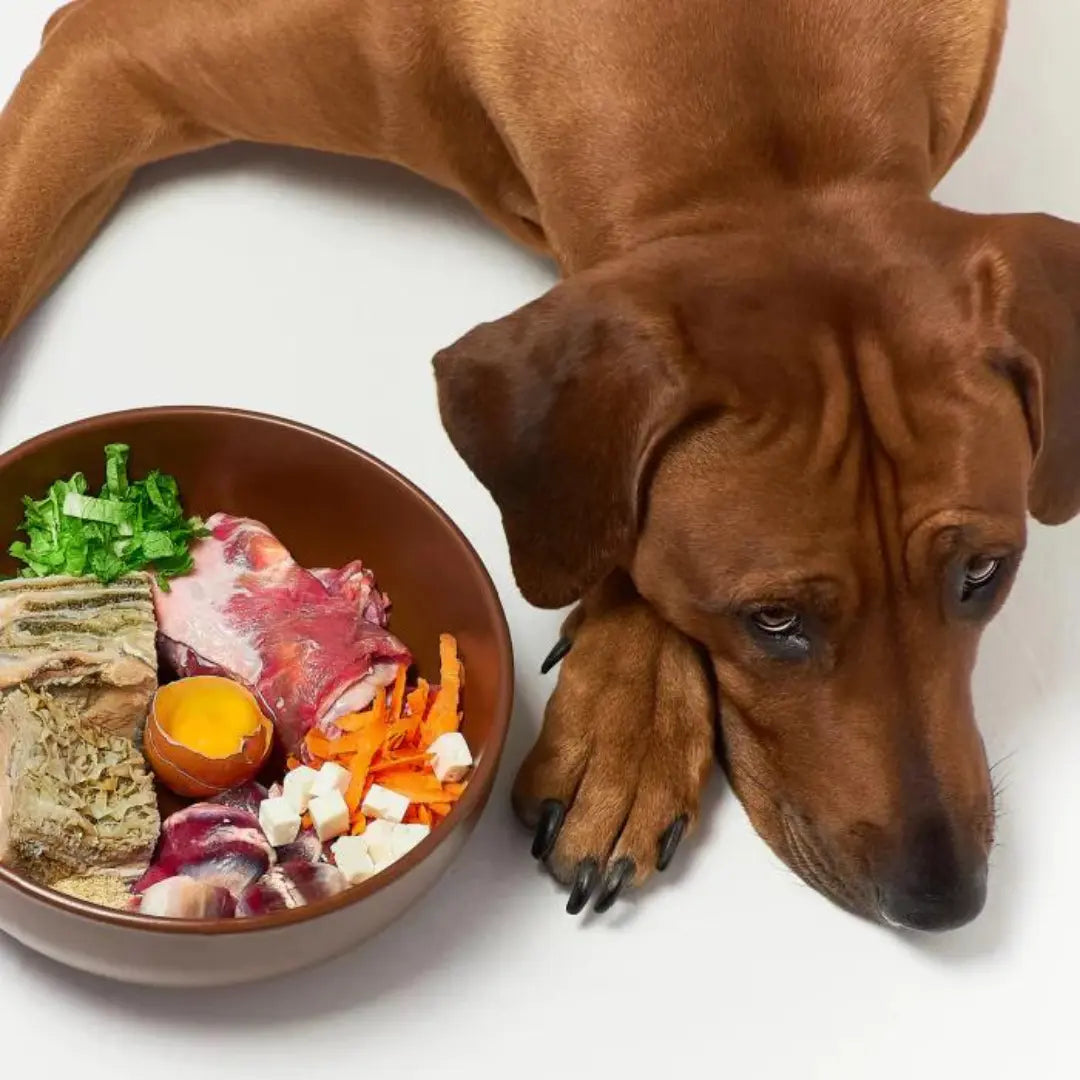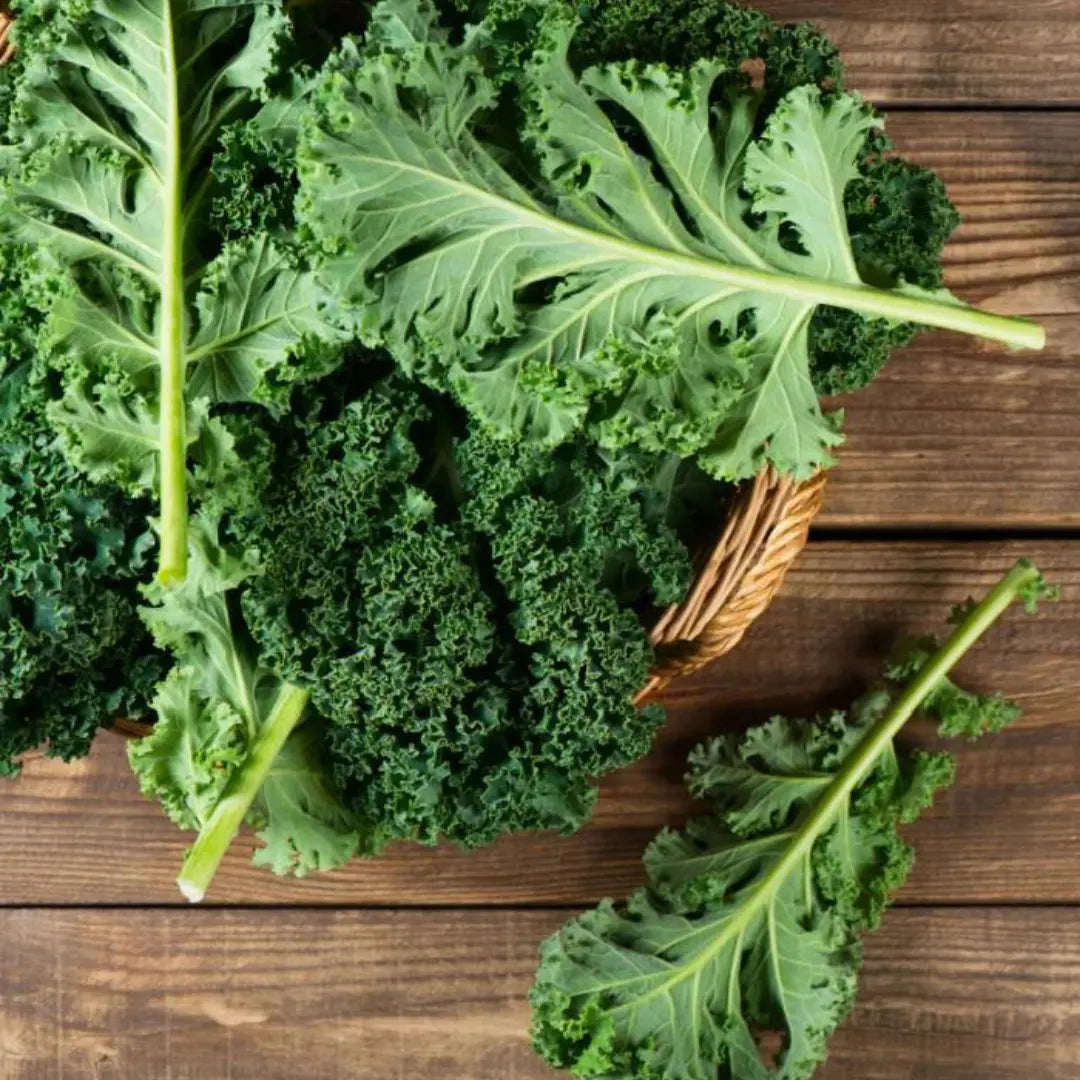- Start cooking for them!
- Rotate proteins and flavors
- Serve food warm
- Make mealtime fun
- Rule out any health issues
- Crackdown on a routine
- Switch out the kibble
- Exercise
- Cut back on the treats
One of the biggest challenges when feeding time comes around for your pup, is getting them to eat their food. While this idea may seem unusual to some dog owners, picky eater dogs are quite common in many households. Some dogs eat anything, and everything you put near them, and some dogs are on the opposite side, making mealtime very frustrating for dog parents. Mealtime should be a time when your pup is excited to re-energize and fuel their bodies; however, this isn't always the case.
There are many reasons you may be dealing with a picky dog, whether it be their lack of enthusiasm for dry dog food (in which case we agree with them), an unidentified dietary issue (maybe it's gluten or allergies), the lack of high-quality food they’re eating, or maybe it's an even bigger issue that‘s out of your control and may need professional attention. Whatever it may be, it’s important to remember there is always a solution to the problem and there are many things dog owners can do to help make mealtime more enjoyable for all.
While your dog‘s appetite may seem strange, it is important to analyze the ways in which your dog reacts to mealtime and certain foods in order to crack down on a solution. To begin, we suggest cutting out dry kibble and wet food if you haven’t already as many food brands contain tons of fillers and preservatives that can seriously harm your pup's digestive health. Just like humans, dogs have sensitive stomachs too, and oftentimes quick and easy pet food such as canned dog food can be the issue. It is important to start incorporating human-grade high-quality ingredients into your dog's diet.
However, sometimes even the best dog food can still seem unappetizing to the pickiest eaters and therefore, introducing new foods and high-quality proteins may not be the quick fix for your picky pooch. While fresh dog food can definitely change the overall health and well-being of your pup, a fussy eater can be the result of many different factors. Below is a list of tips for picky eaters.
1. Start cooking for them! Picky eater dog food
While it may seem daunting trying to figure out what safe to feed your dog, what your dog might like, how much to feed them and what nutrients they need, cooking for your dog can be one of the most beneficial ways to tackle picky eating. You can cater to your dog's likes and dislikes through home cooking and build your own meals and homemade dog food recipes around their needs. This is where our meal mixes come in handy. We designed our Dog Child Meal Mixes to ease the nerves around home cooking and make it as simple, nutritious and delicious as possible. Our meal mixes are filled with various nutrients and ingredients your dog needs that they may be missing, and it takes away the stress of trying to figure it out yourself. Add your own protein, oil and you're set in under 15 minutes!
2. Rotate proteins and flavors
Just like humans, dogs get bored of the same meals. Switching up your pup's mealtime is essential to ensure they enjoy it as much as they should. Dogs love different textures and flavours, so it's important to figure out what works for your dog and incorporate it into other recipes and mealtime. Incorporating food they love with the foods and nutrients they need will make it easier for them to clear their bowls. Further, testing out different proteins with different Dog Child Meal Mix Flavours is a great way to spice up meal time and keep your pup wanting more. Dog Child can be made with six different proteins: turkey, beef, lamb, pork, chicken, & cod & egg which can be mixed with our three types of mixes; Mixed Veggie Meal Mix, Organic Oats & Berries Meal Mix and Grain Free Meal Mix.
3. Serve food warm
This next tip may seem a little funny, but when you think about it, when's the last time you ate cold meat and veggies for dinner? Just like we love our food to be served warm, this may also be the case for dogs. While many dogs may be fine with eating cold food, cold food may be an issue when dealing with a picky pup. Next time mealtime comes around, try warming up your dog's dish.
4. Make mealtime fun
Humans love mealtime, whether it's eating with friends and family, watching a sports game, or enjoying the nice weather outside; there are many ways humans choose to enjoy their mealtime, and dogs can enjoy it too! It's important to try and make mealtime more fun for your pup. Maybe this means bringing their food into the backyard or using enrichment feeders like our Enrichment Tray for Dogs. So if your picky eater isn't enjoying eating in their bowl, try and switch it up!
5. Rule out any health issues
While picky eating isn't always a sign of underlying health issues, in some cases, it can be. Your dog could be experiencing a variety of different issues, such as oral issues or digestive problems. This is why our first tip is to take your pup for a visit to the vet and rule out any possible internal problems. Once you've ruled out any serious issues, it's time to start brainstorming ways to encourage your pup to eat their meals, and there are many ways to do this.
6. Crackdown on a routine
Dogs love routine, and feeding your pup a nutritious meal in a safe spot without distraction every day at the same time can help improve their eating habits. Moreover, by removing your dog's dish after 20-30 minutes, your pup will start to learn that they need to eat their food before it gets taken away. After a few days of developing this routine, your dog will begin to understand that mealtime needs to be taken seriously.
7. Switch out the kibble
As discussed before, your dog may not be eating their food if you're feeding them kibble. We have discussed many times in our other blogs the benefits of fresh food cooked at home and the negatives of kibble, but it is really important to research the food you're feeding your pup. Kibble is often highly processed, filled with artificial flavours, low-quality protein sources and harsh ingredients. Fresh food offers so many incredible benefits to your pup and gives you the confidence of knowing exactly what your dog is consuming. Often fresh human food can be easier on food sensitivities and to digest overall, which is why we recommend our pet parents make the easy switch over to our meal mixes. Our meal mixes are filled with various antioxidants, veggies, probiotics & prebiotics creating the ultimate nutritional blend of healthy ingredients, making healthy cooking for your pup easier than ever! Check out our different meal mixes here, and preorder them today.
8. Exercise
Just like humans, dogs also get hungrier after being active. Exercise is a great way to build up an appetite and can help your particular picky pup with digging into their meals. Exercise makes dogs hungry, and most hungry dogs lose their pickiness when they are hungry; therefore, taking your dog for a long walk right before mealtime might be just what your dog needs to cure their pickiness! If you don't have time for a walk, you can do many other exercises and activities with your dog to help build up their appetite. Give your dog their meal immediately following exercise for the best results, and watch them dive in.
9. Cut back on the treats
Finally, if your dog is refusing to eat, it may mean that you've been feeding them one too many treats. While we have so many delicious recipes and treats on our website, feeding your pup treats in moderation is essential as it can spoil their actual meals. Treats should account for 10% of your dog's daily calories, and it's important to follow this in order to keep your dog reaching for their dinners. Another way treats can negatively impact meal time is if your dog is rejecting their food because they want a treat instead. It's important to reinforce the idea that treats are only occasional and meantime is mandatory by cutting down on the number of treats you are giving your dog.
A picky pup can make mealtime very frustrating, but with a bit of patience and a few handy tips, your dog will be back to eating its food in no time. We hope this blog may have given you a few ideas on how to train your pup to eat their meals moving forward!



